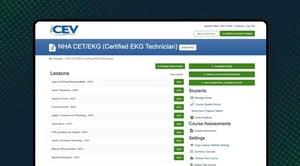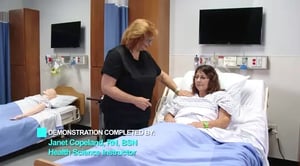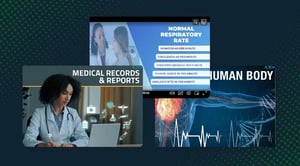CTE Curriculum
Prepare learners with CTE curriculum aligned to industry standards.
An All-In-One Solution for Your Curriculum Needs

Prepare Learners for Certifications
iCEV aligns with a wide range of health science certifications, including industry-recognized credentials from NHA, AMCA, NOCTI, NCHSE, and more.

Bring the Expert to the Classroom
iCEV bridges education and industry for health science students with expert-driven, workplace-relevant content.

Bring Concepts to Life
Bring lessons to life through videos and presentations, giving health science students a firsthand look at practical applications.
Health Science Curriculum
iCEV's comprehensive health science curriculum brings the expert to the classroom through dynamic media-based lessons, allowing educators to focus on what matters most: student success.
Explore the courses below to see how iCEV can fit into your CTE program:
Sorry, there are no resources currently available with the chosen filters.
Failed to load posts. Please try again.
Additional Courses Available Through HealthCenter21
Click the course name to learn more.
Inspire Learners with iCEV
![]()
“My health science teachers have told me it’s the best curriculum they’ve found that really breaks down what the children need to know for the test.”
THERESE ELLENDER
ST. LANDRY PARISH SCHOOL BOARD, LA
![]()
3 Simple Steps to Get Started Today
See how iCEV can help you get back to what matters most – student success.

Start a Trial
Activate your free account to access our full suite of CTE educational materials.

Schedule a Demo
Dive right in with an iCEV team member to explore our solutions.

Request a Quote
Find what’s best for your district and discuss how we can fit your budget.
Empower Your Learners to Career Success
It’s time to stop being overwhelmed by your responsibilities and requirements. With iCEV, you have everything you need to plan courses, certify students, and prepare them for success - all in one place. Our easy-to-use, comprehensive CTE solution provides you the necessary resources and systems to do your best work.
Sign up today and change your learners’ lives.





